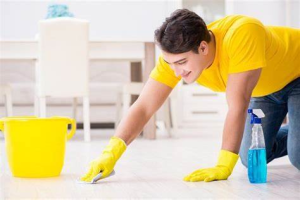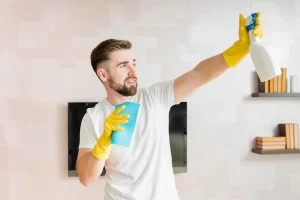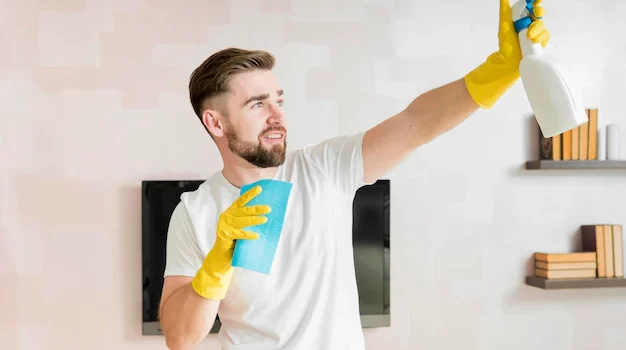
Introduction:
Dr. Ruth Petran, a renowned microbiologist with over 30 years of experience, has dedicated her career to helping people make informed choices in the realm of hygiene and cleanliness., she shares her expertise on a topic that has become increasingly relevant in our daily lives – sanitizing and disinfecting. If you’re a lifestyle enthusiast looking to elevate your understanding of these essential practices, you’re in for a treat. Sanitizing and disinfecting have become buzzwords in the era of heightened hygiene consciousness. With the COVID-19 pandemic reshaping our lives, the importance of maintaining a clean and safe environment has never been more evident. But do you know the difference between sanitizing and disinfecting Dr. Ruth Petran, a distinguished microbiologist, is here to guide you through the nuances of these essential practices and help you make the right choices for your health and well-being.
Sanitizing and Disinfecting
To make informed decisions, it’s vital to understand the subtle yet significant distinctions between sanitizing and disinfecting. Sanitizing reduces the number of germs on surfaces to a safe level, whereas disinfecting eliminates almost all of them. The key difference lies in the level of effectiveness: sanitizing reduces the risk, while disinfecting provides a higher level of protection. Sanitizing is often sufficient for surfaces that don’t frequently come into contact with germs, like kitchen countertops. However, for high-touch areas, such as doorknobs or bathroom fixtures, disinfecting is the preferred option. It’s crucial to choose the right method for the right situation.

Right Products
Understanding the products and techniques for effective sanitizing and disinfecting is paramount. Dr. Petran shares her insights on the best practices in choosing the right products and using them effectively. Cleaner environment, it’s essential to be aware of the disinfectants available. Look for products with the EPA’s “List N” designation, indicating that they are effective against viruses, including the SARS-CoV-2 virus responsible for COVID-19. Each product has a specified contact time – the time the surface should remain wet to ensure the germs are effectively eliminated. If you’re in a rush and don’t follow the recommended contact time, the disinfectant may not work as intended.
KeyPoint:
| Aspect | Sanitizing | Disinfecting |
|---|---|---|
| Level of Germ Reduction | Reduces germs to a safe | Eliminates almost all. |
| level | germs | |
| Appropriate for | Low-touch surfaces like | High-touch surfaces, |
| kitchen countertops | doorknobs, bathroom | |
| fixtures | ||
| Recommended Products | Alcohol-based sanitizers, | EPA “List N” disinfectants. |
| sanitizing wipes | ||
| Effective Against | Common bacteria and some | A wide range of pathogens |
| viruses | and viruses |
Cleaning at Home
Keeping your home clean and safe is a top priority. Dr. Petran suggests sanitizing frequently touched surfaces, such as doorknobs, light switches, and countertops, daily. Disinfect high-traffic areas like the bathroom and kitchen at least once a week.
Workplace Hygiene
For the workplace, it’s crucial to establish a regular cleaning routine. Frequent sanitizing of common areas like break rooms and conference rooms is essential. Additionally, high-touch surfaces in common areas and individual workspaces should be disinfected regularly.
Staying Safe on the Go
When you’re on the move, maintaining personal hygiene is vital. Dr. Petran recommends carrying hand sanitizer with at least 60% alcohol content and using it when soap and water aren’t available. Wipe down commonly touched surfaces like your car’s steering wheel or the handles of shopping carts before use.

Health and Well-being
The impact of sanitizing and disinfecting goes beyond cleanliness; it directly affects your health and well-being. A clean environment not only reduces the risk of infection but can also lead to a healthier and happier life. Research has shown that maintaining a clean and sanitized environment can have positive effects on your well-being. By reducing the presence of harmful pathogens, you enhance your body’s ability to fight off infections. This is especially crucial for individuals with weakened immune systems, such as the elderly and those with underlying health conditions. Beyond the physical health benefits, a clean environment can also have a positive impact on mental well-being. A clutter-free, sanitized space can reduce stress and anxiety, providing a sense of security and comfort.
Eco-Friendly Options
For those who care about the environment, Dr. Petran discusses eco-friendly options and practices for sanitizing and disinfecting, ensuring you’re making responsible choices. Eco-friendly cleaning products are a wise choice for both your health and the planet. Look for products with third-party certifications, like the Green Seal or the EPA’s Safer Choice label, which indicate that the products meet stringent environmental standards. Another sustainable practice is to reduce single-use plastic waste. Consider using refillable sanitizing and disinfecting containers or products with eco-friendly packaging.
Conclusion:
Choice between sanitizing and disinfecting is not merely a matter of semantics; it’s a decision that directly impacts the cleanliness, safety, and well-being of your environment. With the expert insights of Dr. Ruth Petran, you now possess the knowledge to make informed decisions in this critical area of hygiene. Understanding the fundamental difference between sanitizing and disinfecting is the first step in this journey. Sanitizing reduces germs to safe levels, while disinfecting eliminates nearly all of them. By recognizing when and where each method is most appropriate, you can ensure effective protection for yourself and those around you. Choosing the right products and following proper techniques are vital components of this process.










